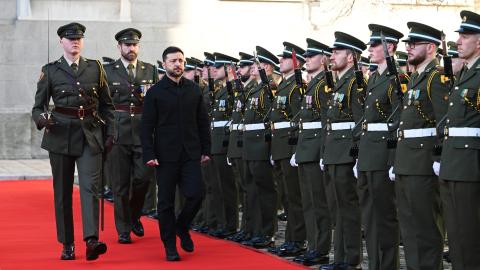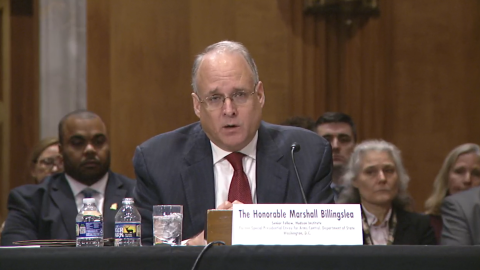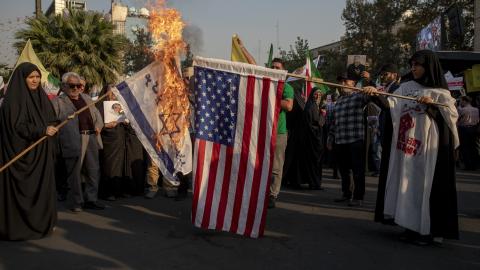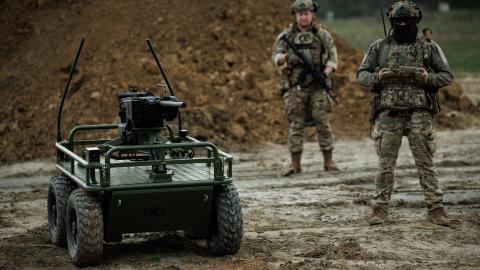Executive Summary
- Ukraine’s defensive position around Pokrovsk deteriorated markedly last week, as Russian forces gained partial control of a road near the long-embattled city.
- The Ukrainian military launched a counteroffensive on the Sumy front, costing a senior Russian general his command.
- Ukrainian air strikes hit an important oil refinery in the Russian city of Saratov, nearly 1,300 miles from the two countries’ border.
1. Battlefield Assessment
After months of grinding combat resulting in minimal territorial gains, last week Russian forces made an important tactical advance. Open-source intelligence indicates that Russian fighters now partially control the road near Rodynske, approximately 10 miles from the city of Pokrovsk, the linchpin of Ukraine’s eastern defenses.
This development poses a significant threat to Ukrainian positions, particularly the lines of communication between Pokrovsk and Dobropillya. The Ukrainian General Staff reports that over 30 percent of its combat operations have centered around the Pokrovsk front. This underscores the importance of this heavily fortified town—and why Russia would make it a geostrategic priority in its assault on eastern Ukraine. If Russia were to deepen its push toward Pokrovsk, Ukraine could face serious trouble.
Aside from the Pokrovsk front, fighting elsewhere continued to feature a relentlessly high operational tempo but minimal changes in territorial control, an enduring dynamic that has been the dominant feature of the conflict. Fighting also intensified last week near Kupiansk, Siversk, Kramatorsk, Toretsk, Chasiv Yar, Orikhiv, and Novopavlivka. On all these fronts, the Russian military maintained an offensive footing against Ukrainian combat formations.
For its part, Ukraine continued to launch long-range salvos deep inside Russia. On August 10, Ukrainian forces targeted the Saratov oil refinery. The compound is situated nearly 1,300 miles from Ukraine’s border with Russia, demonstrating, once again, the sophistication of Kyiv’s growing drone warfare deterrent. Videos and photos from the area showed large fires consuming the compound’s buildings.
To combat Ukraine’s drone prowess, Russia’s defense technological and industrial base (DTIB) has developed a new unmanned ground vehicle(UGV). Boasting a cross-domain system that can share data with ground control stations or other platforms that operate at different security controls, the new UGV comes equipped with fiber-optic cables and can function as a launch platform for first-person view (FPV) kamikaze aerial drones. If or when this new system is produced in large numbers, it will likely perform well in dangerous lines of contact and heavily contested electronic warfare settings.
2. Ukraine’s Achievements in Sumy Oblast Prompt a Russian General’s Dismissal
While Russian forces have gained ground across the battlefield, Kyiv can take some consolation from the failure of Russia’s offensive combat operations in Ukraine’s Sumy Oblast. Last month’s editions of this report noted early signs that the Kremlin’s offensive in Sumy was stalling.
According to Russian Telegram channels, the setback has cost General Alexander Lapin his command post as chief of Russia’s “North” group of troops. General Lapin was once considered one of the likeliest candidates to replace General Valery Gerasimov as the Russian military’s chief of the general staff. In October 2022, however, the pro-Russian Chechen strongman Ramzan Kadyrov openly attacked Lapinin social media posts, damaging the general’s political persona.
General Yevgeny Nikiforov has most likely replaced Lapin. Originally an artillery officer, Nikiforov has gained experience in several of the Russian military’s combat formations, including the airborne troops (VDV), and in several military districts.
General Nikiforov lacks the popularity—and the flamboyancy—of General Mikhail Teplinsky, the commander of the VDV, and cannot boast the battlefield record of General Sergei Surovikin, who was sacked following Yevgeny Prigozhin’s failed putsch in June 2023. Yet Russian President Vladimir Putin is likely hoping that Nikiforov, though lacking in laurels or fame, will bring competency to the job.


















